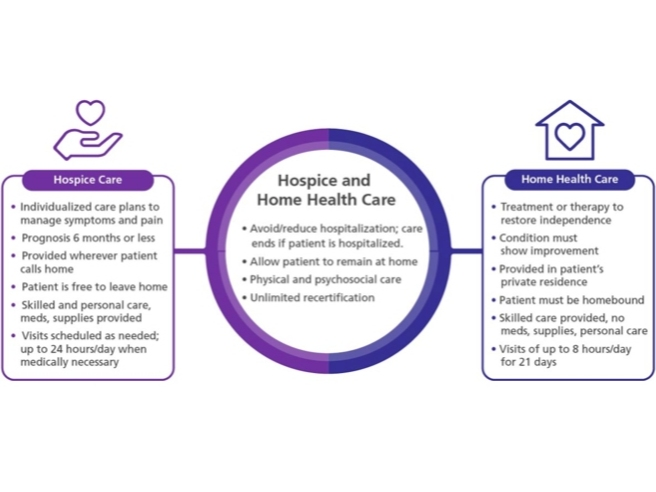Community Corner
November is Palliative Care Month
The Difference Between Hospice and Palliative Care and How You Can Be Prepared

This is a paid post contributed by a Patch Community Partner. The views expressed in this post are the author's own, and the information presented has not been verified by Patch.
Hospice and palliative care programs across the country are reaching out to raise awareness about hospice and palliative care. Hospice is not a place but high-quality care that enables patients and families to focus on living as fully as possible despite a life-limiting illness. Palliative care brings this holistic model of care to people earlier in the course of a serious illness.
“Every year, nearly 1.4 million people living with a life-limiting illness receive care from hospices in this country,” said Edo Banach, president and CEO of the National Hospice and Palliative Care Organization. “These highly trained professionals ensure that patients and families find dignity, respect and love during life’s most difficult journey.”
Find out what's happening in Melrosewith free, real-time updates from Patch.
Hospice and palliative care programs provide pain management, symptom control, psychosocial support and spiritual care to patients and their families when a cure is not possible. These programs combine the highest level of quality medical care with the emotional and spiritual support that families need most when facing a serious illness or the end of life.
What is the difference between palliative care and hospice care? Both palliative care and hospice care are focused on the needs of the patient and their quality of life, with hospice specifically focused on the period closest to death.
Find out what's happening in Melrosewith free, real-time updates from Patch.
What can you do to prepare for hospice or palliative care? Caringinfo.com has the following tips:
1. Getting Prepared for Care and Being Present
When facing a serious, life-limiting illness, you want to feel both prepared – so you can understand your choices and make decisions – and present – so that you are mindful of today’s needs.
Understanding and using the resources available to you, whether you are a patient or caregiver may be overwhelming. Whether its medical resources such as palliative care and hospice, financial resources such as
Medicare and insurance, or other items like advance directives or bereavement care, we will help you navigate them so you can have the experience that is best for you.
2. Communicating Care Wishes Openly and Honestly
Open, honest conversations about end-of-life will relieve loved ones and healthcare providers of the need to guess what you would want if you are ever facing a healthcare or medical crisis.
These conversations – initiated by the patient or by those caring for them – form the basis for any written expression of wishes such as an advance directive.
3. Giving Care and Getting Support
Caregivers provide support to someone who needs help. It doesn’t matter how many hours per week are spent providing support, caring for a family member or friend is not easy, nor is it something most of us are prepared to do.
Often, many don’t think of ourselves as caregivers, we are simply stepping up to do what needs to be done, be it paying bills, talking with doctors, or being present 24 hours a day. These tasks can be new, even bewildering, but Home Instead is here to provide the information you need.
.jpg)
Home Instead
Home Instead was founded in 1994 in Omaha, Nebraska. Today, the Home Instead network has grown to more than 1,100 independently owned and operated franchises that provide in-home senior care worldwide. The world’s leading provider of senior in-home care services, Home Instead CAREGiversSM provide more than 80 million hours of care annually throughout the United States and 13 other countries. Local Home Instead offices employ approximately 90,000 CAREGivers worldwide, providing basic support services and enabling seniors to live safely and comfortably in their own homes for as long as possible. To learn more about Home Instead’s history and services, visit www.homeinstead.com.
This post is an advertorial piece contributed by a Patch Community Partner, a local brand partner. To learn more, click here.